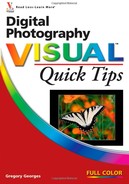Although you can take snapshots to document the events around you, the finer form of photography is all about having a vision of a photo that you want and then being able to use your camera to capture that vision. To develop your vision and increase your ability to effectively use you camera to capture it, you need to experiment and try different ideas. The more you shoot, experiment, and study your work and the work of others, the better your photography will be.
Coming up with creative photo ideas is easy, and you will often be pleased with your results. In addition to trying ideas that are presented in photography books, you should also think of new ideas yourself.
For example, you can experiment with different features on your camera and use them creatively. Push each of the available settings to the extreme to see what results you get. Maximum and minimum aperture settings and low shutter speeds are just two settings that can help you get exciting photographs. Also, you should think about how to make various design elements more pronounced. Think of ways to shoot that put focus on the subject, capture bold or subtle colors, or reveal patterns or shapes in complex scenes, or just shoot to capture elements or backgrounds to later combine with other images. The more you think how to shoot creatively, the more you will understand how to shoot well!
There are many ways that you can focus attention on your subject. Color, texture, background, focus, perspective, and a wide range of other visual design elements are just a few of the factors that you can use to draw attention toward your subject.
The next time that you shoot, think carefully about how you can focus more attention on the subject.
When using a long telephoto lens, you have considerable control over the depth of field, which enables you to show a sharply focused subject against a soft, blurred background with contrasting colors. Whatever strategy you use, placing more attention on your subject often results in a better photograph.
A long telephoto lens and a large aperture were used to make this purple iris stand out against a blurred background.
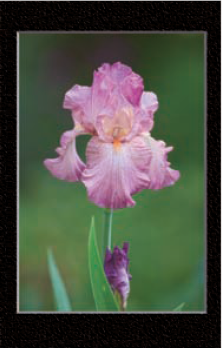
The bright green background of softly blurred plants helps focus attention on the spider on a web.

The camera was positioned a few inches up from the ground to focus attention on the boy's activity.
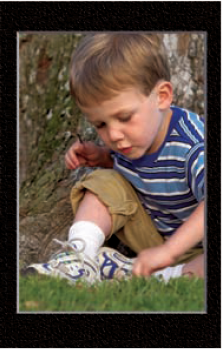
Bright contrasting orange flowers isolate the yellow butterfly from the background.
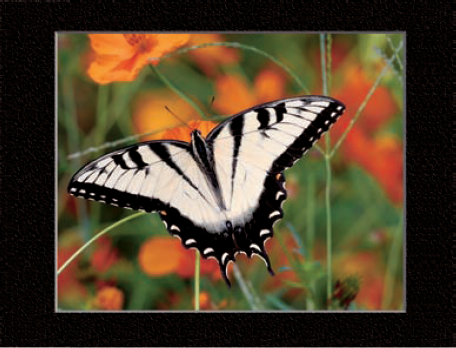
Part of a walkway attached to the building frames this high-rise office tower.

The face of this lacrosse player was shot to fill the frame to keep attention on his gaze toward the field.
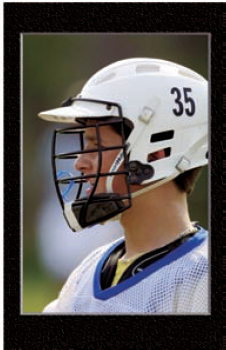
Tip
Photo Tip!
Use a telephoto lens when you want to isolate a subject from its background. Long focal length lenses have a shallow depth of field, and therefore enable you to show a sharply focused subject against a soft out-of-focus background. When you want to isolate a subject with a telephoto lens, use a large aperture setting to keep your subject in focus while creating a soft background. See Chapter 4 for more about focal length and depth of field.
Color can be one of the most powerful elements in a photograph. Certain colors evoke emotions and create moods; others are less apt to be noticed. Red, for example, is always a color that is quickly noticed, even when it takes up a small part of a photo. Most scenes or subjects can become spectacular or relatively uninteresting depending on the color of the light that is available. Study colors to learn how they work together and how they can be combined to ruin a photo. Although heavily saturated bold colors can be dramatic, so can soft, subtle colors and even scenes with little color that result in a monochromatic photograph.
Richly saturated yellows, greens, and purples draw a viewer's attention to the iris.
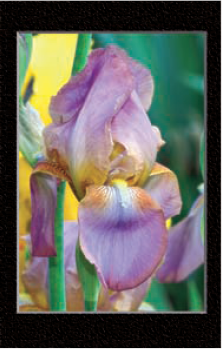
The quality of the soft pastel colors along with the soft focus effect helps add interest to this water lily.
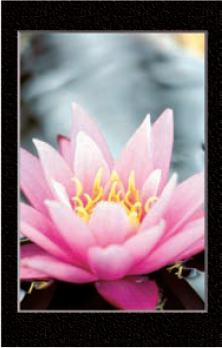
The contrasting bright red vine leaves make this mostly monochromatic bark texture more interesting.
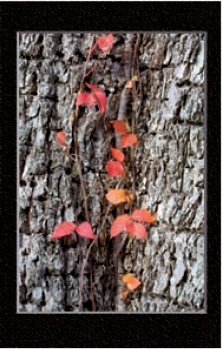
The pink flowers in the background help to clearly delineate the edges of the white and blue iris in the center of this photo.
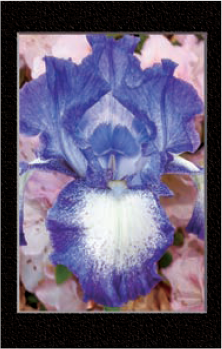
The awful combination of the olive green background against the purple and white iris shows how important it is to shoot to capture colors that work well together.
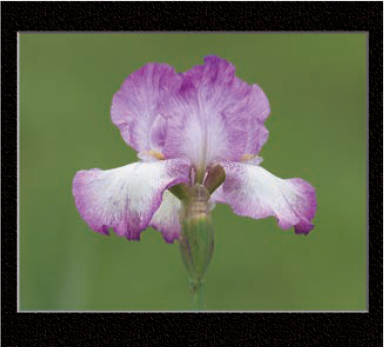
Tip
Did You Know?
Color can sometimes say more in a photograph than the subject. Bold contrasting colors that are balanced on a page can give the viewer an entirely different impression than if the colors are not balanced and cause some tension.
You can use a slow shutter speed to show movement by recording a moving subject as being partly blurred. However, sometimes you cannot choose a slow enough shutter speed when shooting in bright light because cameras have a limit to the minimum aperture. That limit may require a shutter speed that is too fast to show motion. In such cases, you can use a neutral density filter to reduce shutter speed.
A neutral density filter is a glass lens filter that reduces the amount of light that gets to the image sensor in your camera. Generally, when you use a neutral density filter to show motion, you will need to use a tripod.
A combination of the shade from a tree and a neutral density filter allows a slow shutter speed to capture the motion of this person walking and gives her a ghost-like appearance.
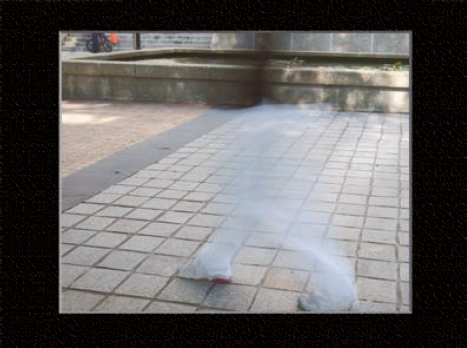
Without the use of a neutral density filter, this photo of a motorcycle could not have been taken because there was too much light to use a slow enough shutter speed to create this panning effect.
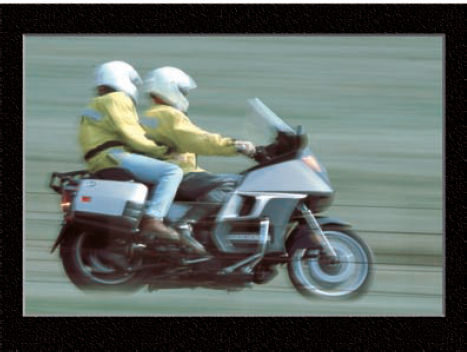
A polarizer is a filter that attaches to your lens. Polarizers have two primary uses: to remove light reflections and to enhance or deepen the color saturation. When you use a polarizer to increase the color saturation, you must shoot at a right angle to the sun. As you turn more toward or away from a right angle to the sun, you are able to control less of the effect.
When you want to shoot without the distraction from light reflections, you can use a polarizer to reduce or eliminate them altogether. A polarizer is useful, for example, when you want to shoot through a glass window and show what is on the other side.
Reflections of saturated colors of the trees and sky make the bottom of this shallow stream hard to see.
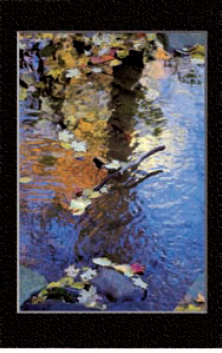
A polarizer filter removed the reflections so that the bottom of the stream is now visible.
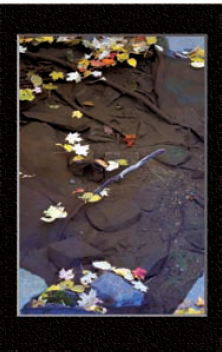
Using one of the digital stitching applications or a feature such as Adobe Photoshop Elements Photomerge, you can shoot and later combine multiple photos into a single, long vertical or horizontal panoramic photo.
When you shoot photos that you will later combine using a digital stitching application, you need to overlap each photo by ⅓ to ½ so that you can match and blend the images seamlessly. You also need to be careful to maintain the same exposure throughout your photos. Avoid shooting moving subjects such as clouds or ocean waves that make photos too different to be combined. Finally, you should always use a tripod.
These four photographs of a country landscape were taken with a camera mounted on a tripod with a head that allows panning.
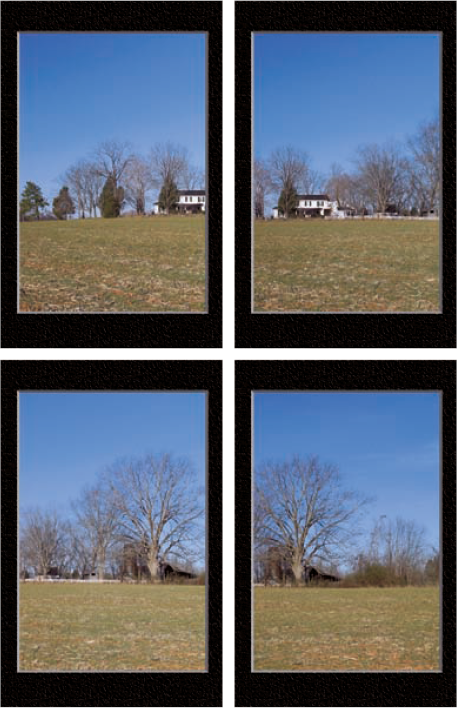
This photo was created by digitally stitching together the four photos shown on the prior page. Adobe Photoshop Elements was used to stitch the images together and to make additional edits such as the color change.
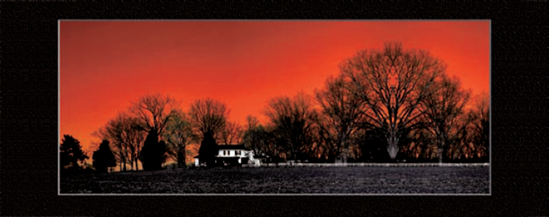
Tip
Did You Know?
You can use the Adobe Photoshop Elements Photomerge feature to combine multiple photos into a single, large photo for making large prints. If your digital camera does not have enough pixels to make a quality print in the size that you want, you can shoot several photos and combine them with Photomerge.
No matter what subjects you like to shoot, there are times when you can capture a photo with a "Wow!" factor. Nature photographers are always looking to photograph the red fox in golden light, or maybe a black bear mother with four cubs. To get photographs with a "Wow!" factor, you need to look for exceptional light, perfect natural specimens, or unusual occurrences, or maybe you just get enough of the photographic variables correct that you get an outstanding photograph through good vision, camera settings, and composition. Often the trick to getting a photo with a high "Wow!" factor is being in the right place at the right time and using your skills.
A row of black-necked stilts fishing together as a team is as amazing to watch as it is to see in a photo.

Wow! What is this foot attached to? Sometimes it is what is not in a photo that makes it interesting.
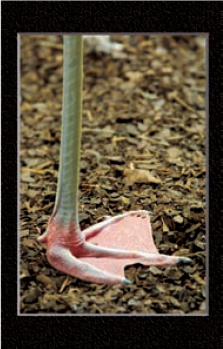
Thousands of wintering birds flying and grazing in open fields can be an awesome thing to see, hear, and photograph.
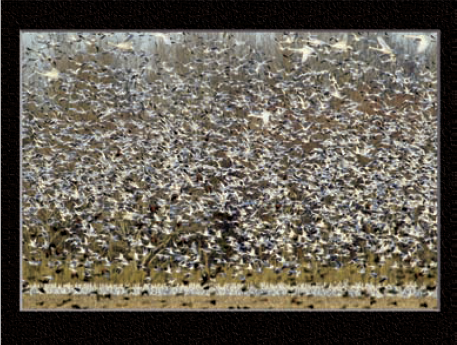
Soft, diffused light tends to reduce contrast. Unlike bright light that can create more contrast than you can capture on an image sensor (or film), soft light enables you to show good detail in all parts of an image, and it enables you to get excellent smooth gradations.
Learn to look for low-contrast light and take advantage of it when you find it.
Early-morning or late-evening light is usually a good time to find low-contrast light with good color. Mist, fog, haze, or clouds can also create excellent low-contrast light that is a joy to shoot. Besides reducing contrast, these lighting conditions can also reduce color saturation and enable you to capture monochromatic images.
Heavy cloud cover and dense fog reduced the contrast in this photo taken in Ireland.

Low light levels help create the smooth two-toned gradation that is the background for this digitally edited tree.
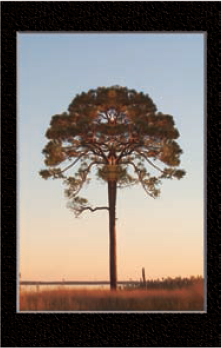
The low-contrast light that creates the wonderful two-toned gradation enhances this simple photograph of a coastal waterway.
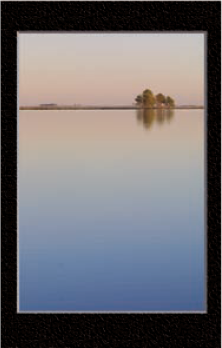
You can usually get out-of-the-ordinary photos by shooting when the seasons change. In early spring, you can find new buds that can be fascinating to watch as they open.
Undoubtedly, the rich bold colors of fall can also be a key factor for getting extraordinary photos that are hard to match when shooting at any other time of the year. The best approach for deciding when to go to shoot fall colors is to watch them yourself or find someone who can give you a daily update if you live too far away to visit except when shooting.
Careful observation of nature in early spring can provide you with a deeper understanding of your subjects.
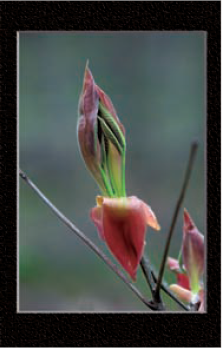
When a sweet gum tree grows new buds, it also hangs inedible spiny fruits for a few weeks before dropping them.

The opening of buds on many plants and trees can be amazing to watch and photograph over a few days.
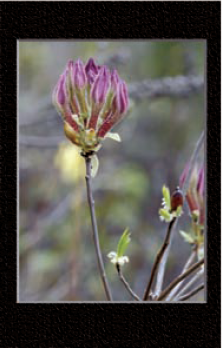
Patterns and shapes can often become the strongest elements in a photograph, and you can find them everywhere after you develop a skill for noticing them and capturing them with your camera.
Our minds are always working to make sense of what our eyes see by looking for patterns and shapes in the complex and often over-cluttered environment that we live in. The result is that patterns and shapes are pleasing. Sometimes it is the pattern or shape that makes a photograph a good one, rather than the subject itself. In fact, many good photographs feature a strong pattern or shape that is made by something that is not even recognizable.
The softly focused lupine flowers in the background mirror the graceful shape of the blue lupine flower in the foreground.
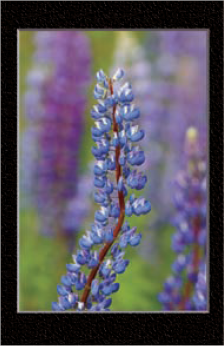
This single elegant yellow fern's shape is enhanced by the shapes and orientation of the blurred grasses in the background.
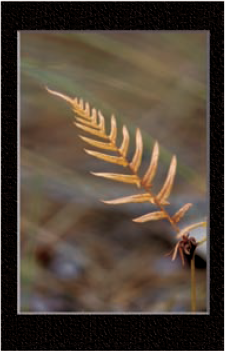
The shape and color of this brightly colored wildflower add interest to this photograph.
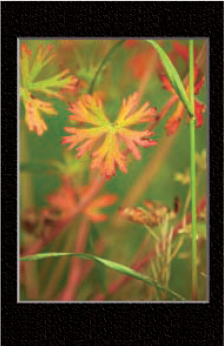
After you start taking photos with a digital camera and editing them with an image editor, you have moved into an entirely new world of possibilities. Each time that you shoot, you should be thinking about what it is you can or cannot do with your image editor.
Because you can combine one or more photos or parts of photos, remove unwanted parts, substantially modify contrast and tonal range, and much more, you need to think carefully about what you decide to shoot, how you shoot, and even what you may not want to shoot. When you shoot and edit digitally, you can frequently correct these problems with an image editor.
This photo of a field of wildflowers was intentionally blurred so that it could be combined with the following photo to get a soft-focus, double-exposure effect.
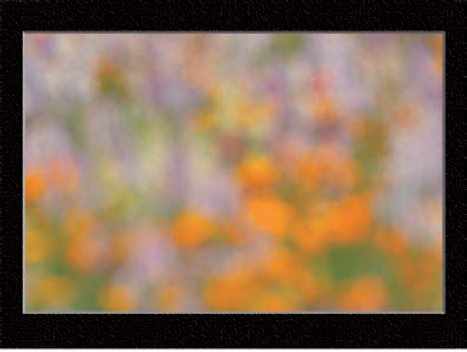
This photo was taken to add to the preceding photo as a layer with a blend mode in an image editor.
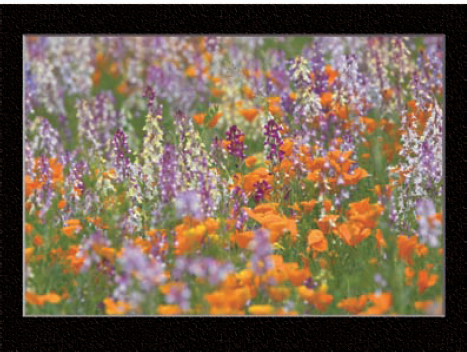
Digital brush strokes and filter effects transformed this photo of the Sedona desert into a digital painting.

A pelican was shot specifically to become an object to use in another photo, such as this one of a swing in the woods.
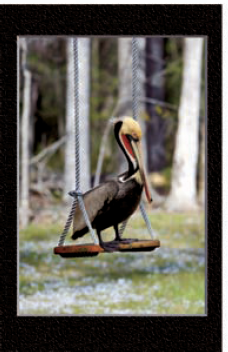
An overexposed and slightly blurred photo was used to make this architectural image.

Tip
Photo Tip!
Think about and shoot photo objects and backgrounds. The next time that you find a wonderful subject, such as an old car sitting in a field with an ugly bright sky, think "photo object." Then, when you find a perfect background scene for that car, shoot it and combine it with the old car and foreground.
Break all the photography rules and guidelines that you know. Shoot with a slow shutter speed without a tripod. Intentionally overexpose and underexpose, shoot in high-contrast light, shoot in low light, shoot in the rain or a snow storm. Shoot a subject that you ordinarily do not shoot. Shoot using extremes — extreme vantage points, extreme focal lengths, extreme aperture settings, and extreme distances to the subject.
When you shoot a popularly photographed subject or scene, think carefully about all the obvious and common shots that are taken and then try to come up with a dozen new ways to shoot the same subject.
A slow shutter speed was used to create this photo of a BMX racer.

Attention is drawn to this statue by zooming the lens during exposure with a slow shutter speed.

Slight horizontal panning during exposure created this blurred sunset effect.

Long exposures in low-light environments can create rich, glowing colors that can make spectacular photographs. Fairgrounds with brightly lit moving rides can result in some spectacular images with the brightly colored lights represented as blurred streaks of heavily saturated colors. Richly colored sunsets can also provide wonderful light for taking photos with dramatic color.
When you shoot in low-light levels, you need to use a tripod to get sharply focused photographs. To minimize camera shake caused by pressing the camera's shutter release and to further reduce any blur caused by camera movement, you can use a timed shutter release feature if your camera has one.
The vase of flowers shown through this archway is illuminated in rich colors that were captured in low light with a camera mounted on a tripod.
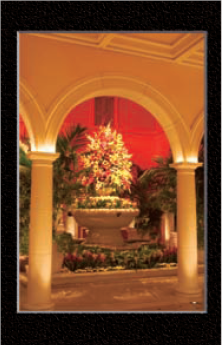
These church organ pipes were hardly noticeable in the low light level, but they glowed in a photo taken with a camera mounted on a tripod using a long exposure.
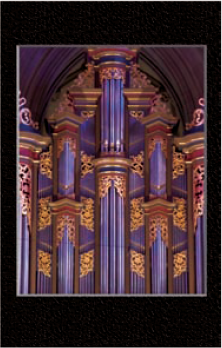
The richly saturated colors of this Las Vegas hotel were captured using an exposure time of two seconds.

